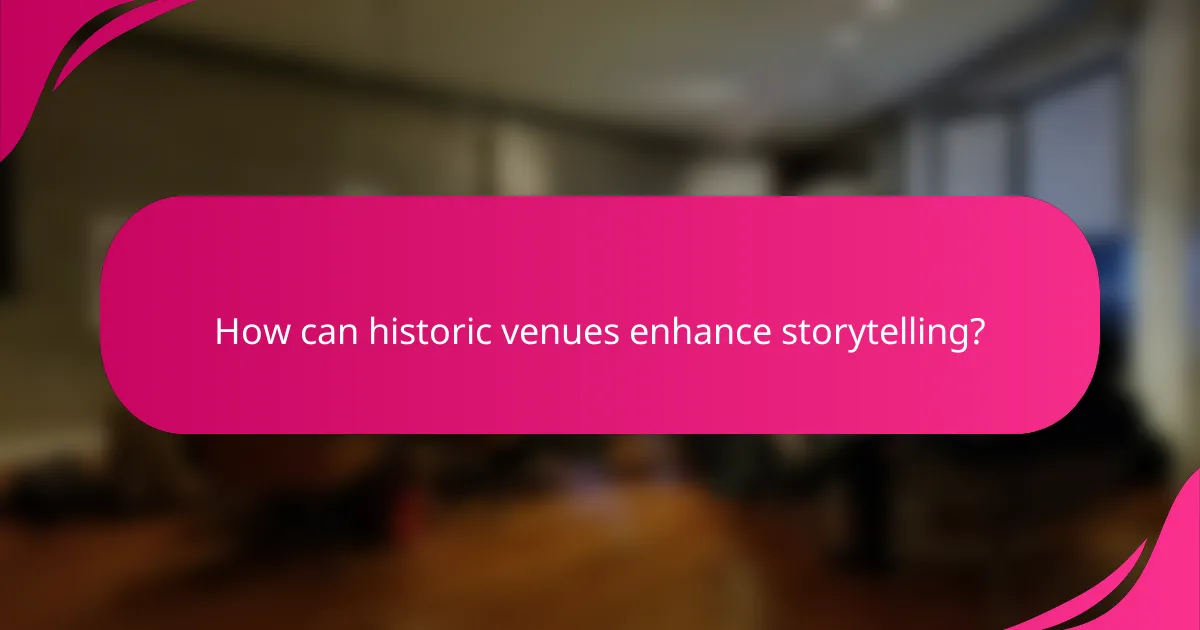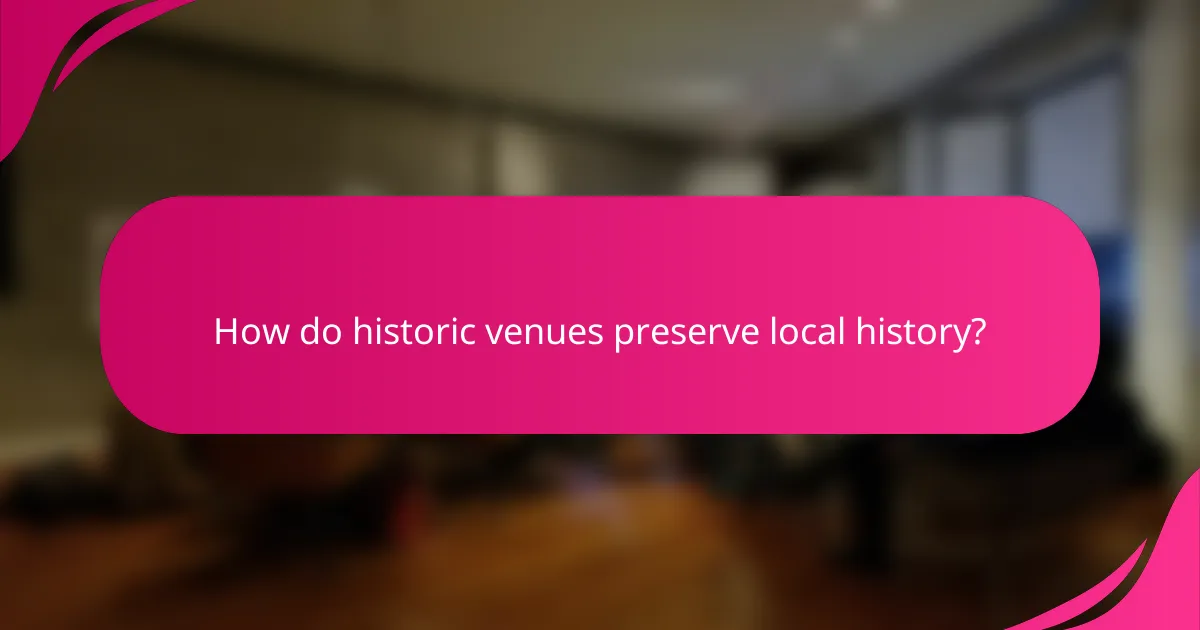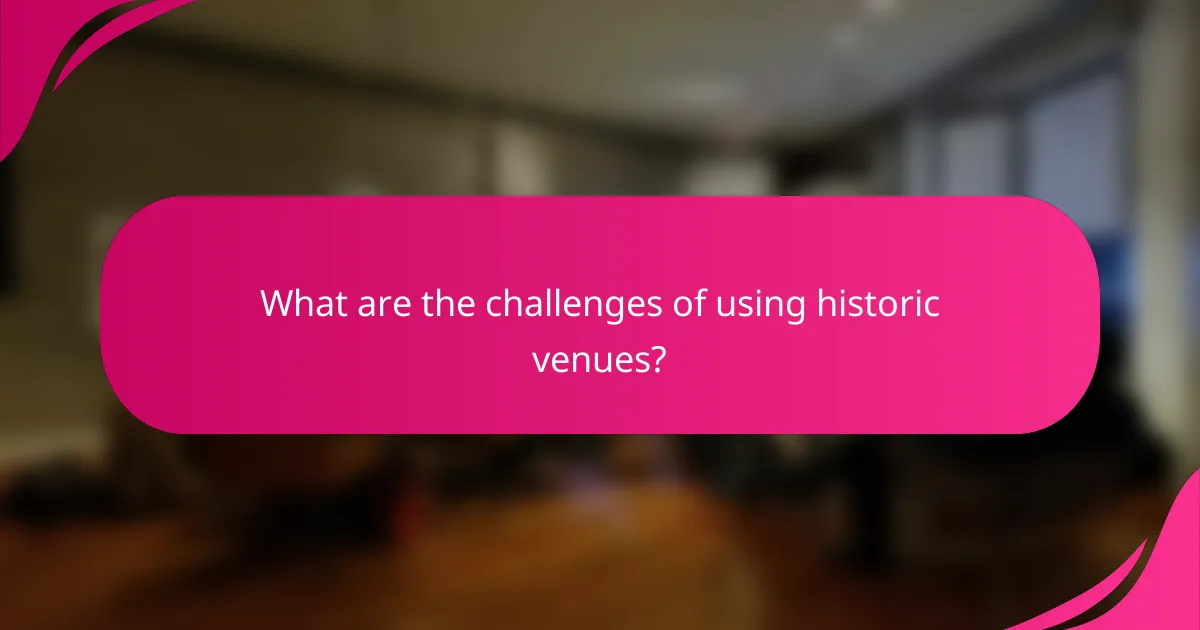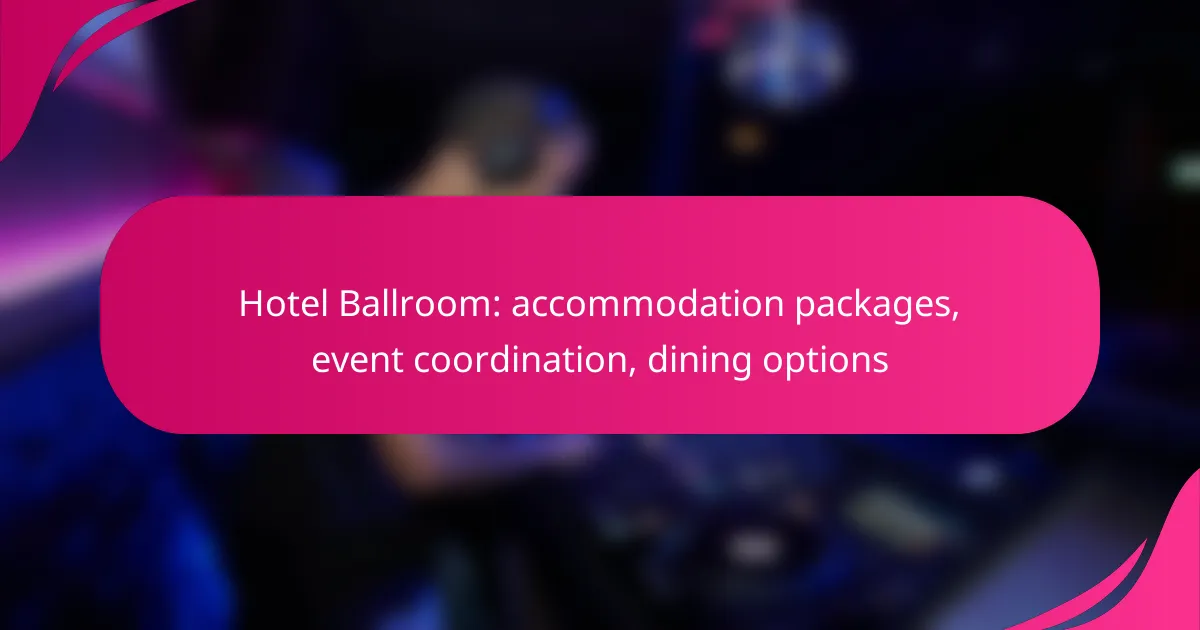Historic venues in London are a treasure trove of architectural charm and captivating stories, inviting visitors to explore the city’s rich past. Locations like the Tower of London and Westminster Abbey not only showcase exquisite designs but also serve as powerful backdrops for storytelling, enhancing the overall experience. These sites foster a deeper connection to local history, making any event or visit truly memorable.

What are the best historic venues in London?
London boasts numerous historic venues that offer architectural charm and rich storytelling opportunities. Key sites like the Tower of London and Westminster Abbey not only showcase stunning designs but also provide insights into the city’s extensive history.
The Tower of London
The Tower of London is a historic castle located on the north bank of the River Thames. Known for its iconic architecture and as a former royal palace, it has served various purposes, including a fortress and prison. Visitors can explore the Crown Jewels and learn about the tower’s intriguing past.
When visiting, consider joining a guided tour for deeper insights into its history. The site can be quite busy, especially during peak tourist seasons, so booking tickets in advance is advisable.
The British Museum
The British Museum houses a vast collection of world art and artifacts, making it a treasure trove for history enthusiasts. Its impressive architecture complements the diverse exhibits, which span thousands of years and cultures. Entry is free, but special exhibitions may require tickets.
To make the most of your visit, plan ahead by selecting specific galleries to focus on, as the museum is extensive. Audio guides are available to enhance your understanding of the exhibits.
St. Paul’s Cathedral
St. Paul’s Cathedral is an architectural masterpiece known for its magnificent dome and stunning interior. It has been a site of significant events in British history, including royal weddings and state funerals. The cathedral’s design by Sir Christopher Wren is a highlight of Baroque architecture.
Visitors can climb to the dome for panoramic views of London, but be prepared for a steep ascent. Attending a service can provide a unique experience of the cathedral’s atmosphere.
Westminster Abbey
Westminster Abbey is a UNESCO World Heritage Site and a key symbol of British history. It has hosted numerous royal ceremonies, including coronations and weddings. The Gothic architecture and intricate details make it a stunning venue to explore.
Consider booking a guided tour to fully appreciate the abbey’s history and significance. Entry fees apply, and it’s wise to check the schedule for any services or events that may affect visiting hours.
Hampton Court Palace
Hampton Court Palace is a former royal residence that showcases Tudor architecture and beautiful gardens. It offers a glimpse into the lives of Henry VIII and his court, with various rooms and exhibitions dedicated to this period. The gardens are particularly lovely in spring and summer.
Plan your visit to include the maze and the gardens, and consider attending one of the seasonal events hosted at the palace. Tickets can be purchased online for convenience.

How can historic venues enhance storytelling?
Historic venues enhance storytelling by providing a rich backdrop that captivates audiences and deepens narratives. Their unique architectural charm and connection to local history create immersive experiences that engage visitors on multiple levels.
Unique architectural features
The architectural features of historic venues often reflect the era in which they were built, showcasing styles such as Gothic, Baroque, or Art Deco. These distinctive elements, like intricate moldings, grand staircases, and stained glass windows, can serve as visual storytelling tools that evoke emotions and set the scene for narratives.
When planning an event or presentation in a historic venue, consider how the architecture can complement your story. For example, using a grand hall with high ceilings can enhance themes of ambition or grandeur, while a cozy, intimate space may be better suited for personal stories or smaller gatherings.
Rich historical narratives
Every historic venue has its own story, often tied to significant events or notable figures. These narratives can be woven into presentations or events, providing context and depth that enrich the overall experience. For instance, a venue that hosted a pivotal political meeting can add layers of meaning to discussions about democracy or civic engagement.
Incorporating local history into storytelling can resonate more with audiences, making the experience feel relevant and personal. Researching the venue’s past and sharing anecdotes or lesser-known facts can create a more engaging narrative that captivates attendees.
Interactive experiences
Historic venues often offer opportunities for interactive experiences that enhance storytelling. Guided tours, reenactments, or hands-on workshops can immerse visitors in the history and culture of the location, making the stories more tangible and memorable.
To maximize engagement, consider incorporating technology such as augmented reality or mobile apps that provide additional context and information about the venue’s history. This can create a dynamic storytelling environment that appeals to diverse audiences, encouraging participation and exploration.

What are the benefits of hosting events in historic venues?
Hosting events in historic venues offers unique advantages, including architectural charm and rich storytelling opportunities. These locations not only enhance the aesthetic appeal of an event but also provide a deeper connection to local history, making gatherings more memorable.
Memorable atmospheres
Historic venues are often characterized by their distinctive architecture and ambiance, creating a captivating backdrop for any event. The unique design elements, such as ornate ceilings, vintage furnishings, and original artwork, contribute to an unforgettable atmosphere that modern venues may lack.
Consider venues like old theaters, mansions, or converted warehouses that retain their historical features. These settings can evoke nostalgia and inspire creativity, making them ideal for weddings, corporate events, and social gatherings.
Increased guest engagement
Events held in historic venues tend to foster greater guest engagement due to their intriguing narratives and visual appeal. Attendees are often more inclined to explore and interact with their surroundings, leading to more meaningful experiences.
Incorporating storytelling elements into the event, such as guided tours or historical presentations, can further enhance engagement. This approach not only entertains guests but also educates them about the venue’s significance, creating a lasting impression.
Local cultural immersion
Hosting events in historic venues allows for a deeper immersion into local culture and heritage. These sites often reflect the community’s history, traditions, and artistic expressions, providing a unique context for any gathering.
Utilizing local caterers, artists, and performers can enhance this cultural experience, showcasing regional flavors and talents. This not only supports the local economy but also enriches the event, making it more authentic and memorable for attendees.

What should you consider when choosing a historic venue?
When selecting a historic venue, consider its architectural charm, storytelling potential, and connection to local history. These factors can significantly enhance the experience for your guests and create a memorable atmosphere for your event.
Capacity and layout
Evaluate the venue’s capacity to ensure it can comfortably accommodate your expected number of guests. Historic venues often have unique layouts that may not follow modern standards, so consider how the space can be configured for your event type, whether it’s a banquet, presentation, or ceremony.
For example, a venue with a grand hall may be ideal for larger gatherings, while smaller, intimate spaces might suit private events better. Always check for any restrictions on maximum occupancy to comply with safety regulations.
Accessibility options
Accessibility is crucial when choosing a historic venue. Ensure that the venue provides adequate access for individuals with disabilities, including ramps, elevators, and accessible restrooms. Some older buildings may have limitations due to their architectural design.
Consider conducting a site visit to assess the ease of access and any potential challenges for guests with mobility issues. It’s also helpful to communicate these options clearly in your event materials to ensure all guests feel welcome.
Technical facilities
Check the technical facilities available at the venue, such as audio-visual equipment, Wi-Fi access, and power sources. Historic venues may not always have the latest technology, so understanding what is provided and what you may need to rent is essential.
For instance, if you plan to use multimedia presentations, confirm that the venue has compatible screens and sound systems. Additionally, inquire about any restrictions on setting up equipment or making modifications to the space.

How do historic venues preserve local history?
Historic venues play a crucial role in preserving local history by serving as tangible reminders of the past. They provide a space for storytelling, community engagement, and educational opportunities that connect residents and visitors to their heritage.
Community engagement programs
Community engagement programs at historic venues foster a sense of belonging and pride among local residents. These initiatives often include volunteer opportunities, local history days, and collaborative projects that invite community input in preserving and interpreting the venue’s history.
For example, a historic site might host a “Heritage Week,” where locals can share their stories, participate in restoration efforts, or contribute artifacts. Such programs not only enhance the venue’s narrative but also strengthen community ties.
Educational tours and workshops
Educational tours and workshops are essential for teaching visitors about the historical significance of a venue. These programs often cater to schools, families, and history enthusiasts, providing guided experiences that highlight key events and figures associated with the site.
Workshops might include hands-on activities like traditional crafts or cooking classes that reflect the venue’s historical context. This immersive learning approach helps participants appreciate the venue’s role in the local narrative.
Historical exhibitions
Historical exhibitions within these venues showcase artifacts, documents, and multimedia presentations that illustrate local history. These exhibitions are carefully curated to tell compelling stories, often rotating themes to keep the content fresh and engaging for repeat visitors.
For instance, a historic venue might feature an exhibition on the town’s founding, complete with photographs, personal letters, and interactive displays. Such exhibitions not only educate but also inspire visitors to explore their own connections to the past.

What are the challenges of using historic venues?
Using historic venues presents unique challenges, including preservation regulations, accessibility issues, and potential limitations on modern amenities. These factors can impact event planning and execution, requiring careful consideration and adaptation.
Preservation Regulations
Historic venues are often subject to strict preservation regulations that aim to maintain their architectural integrity. This can limit alterations, requiring event planners to work within existing structures and features. Understanding local laws and guidelines is essential to ensure compliance and avoid costly fines.
For example, in the United States, the National Historic Preservation Act mandates that any modifications to federally recognized sites must be approved by relevant authorities. Familiarizing yourself with these regulations can help streamline the planning process.
Accessibility Issues
Many historic venues were not designed with modern accessibility standards in mind, which can pose challenges for guests with disabilities. Features such as stairs, narrow doorways, and uneven surfaces may hinder access. It’s crucial to assess the venue’s accessibility and consider accommodations, such as ramps or designated seating areas.
In Europe, the European Accessibility Act outlines requirements for public venues, emphasizing the need for inclusivity. Event planners should evaluate how these regulations apply to their chosen historic site to ensure compliance and enhance guest experience.
Limitations on Modern Amenities
Historic venues may lack modern amenities such as high-speed internet, advanced audio-visual equipment, or climate control systems. This can affect the overall experience for attendees, particularly for corporate events or large gatherings. Planners should identify these limitations early and seek alternative solutions, like portable equipment or temporary installations.
For instance, if a venue does not have Wi-Fi, consider providing mobile hotspots or ensuring that speakers have the necessary equipment to present effectively. Balancing the charm of the historic venue with the needs of modern events is key to a successful gathering.



